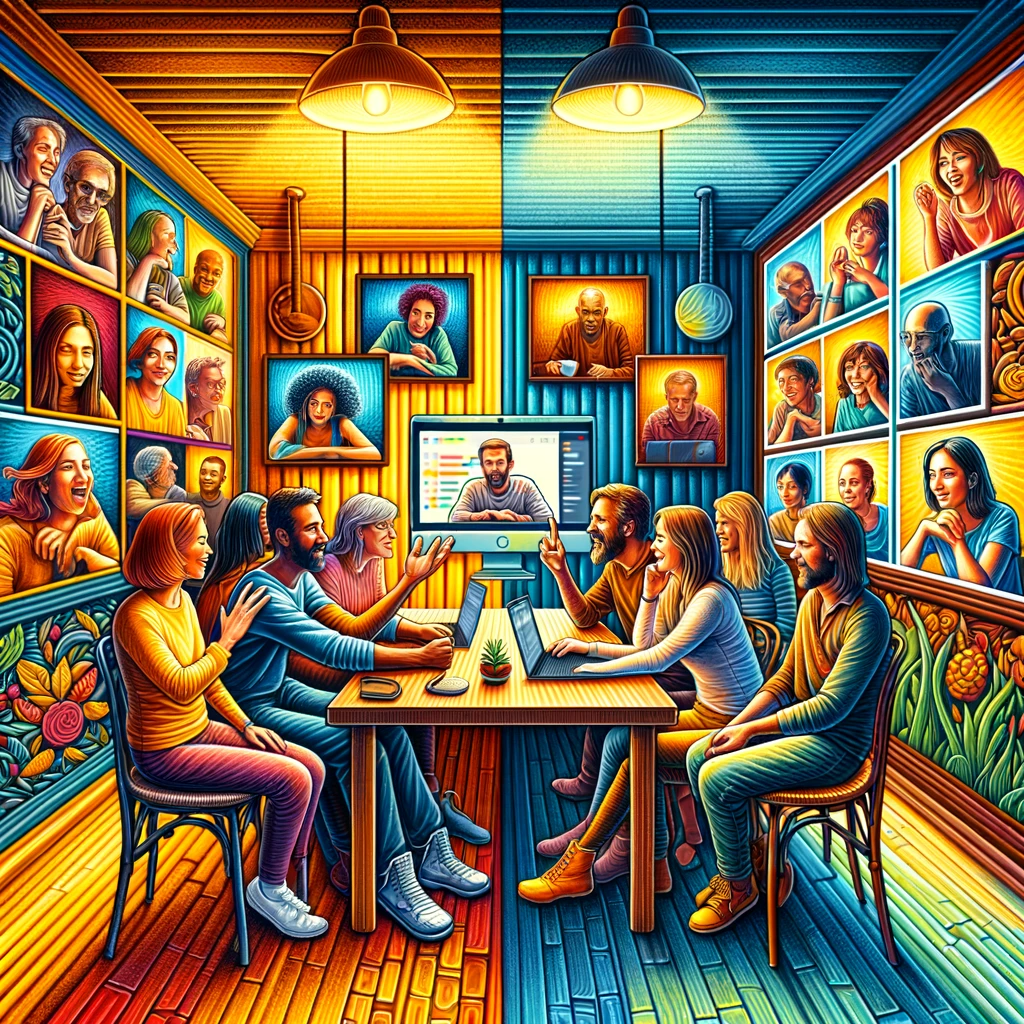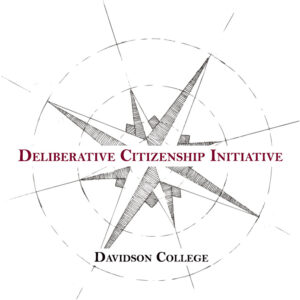
Logan Jain ’26 (DCI Fellow)
Like so many of my peers, interacting in the Zoom space is nothing new to me. While the necessary constraints of the COVID-19 pandemic provided the initial introduction, I still regularly find myself on Zoom for a variety of reasons. Frequently, I’m thankful for the technological impact of Zoom, allowing me access to people and information that I might not otherwise be privy to.
This was the case a few weeks ago when sickness prevented me from physically attending the DCI’s first facilitator training session of the year, but a well-integrated virtual option allowed me to still take part. A week later, no longer ill, I attended the second training session in-person. Each session featured a mock deliberation, and comparing my experience in this activity across the two mediums allowed me to think about the benefits and drawbacks of each as a conduit for constructive and meaningful deliberation.
One of the stated goals of the DCI is to build community via deliberation. When we hear the word community, there can be an inclination to view it as rooted in a physical location (college community, neighborhood community, etc.). However, digital platforms disrupt this notion, allowing deliberative communities to form that transcend physical location.
My deliberative group on Zoom was geographically diverse, and also more diverse along racial and generational lines than my in-person group.
This was certainly no coincidence; the town of Davidson is over 85% white compared to a national average of 60%. And because of the College, most of my in-person group was composed of fellow students. Meaningful deliberation requires a diversity of viewpoints, and one way to increase that diversity is through participation from individuals with different life experiences, demographic backgrounds, and identities. The geographic segregation of America makes this difficult, but virtual engagement makes it more possible, allowing individuals to join the collective act of deliberation regardless of their location.
Community-building also relies on the quality and authenticity of interaction. During my in-person mock deliberation, I found nuanced elements of human interaction, such as eye contact and body language, to be a critical part of this process. The conversation flowed in a manner that I hadn’t experienced on Zoom, and I left feeling a deeper connection to the individuals whom I deliberated with.
Perhaps this was also a product of my concentration. On Zoom, I found it more challenging to feel actively engaged in the conversation as the effects of staring at a computer screen sapped my focus. Face-to-face, I was invigorated by the emotions of those around me and felt like it took far less effort to maintain a necessary level of engagement.
Ultimately, rather than determine that one medium is unequivocally better than the other for deliberation, I came to the conclusion that each has its own strengths and weaknesses and has an important role in furthering the DCI’s mission. Some elements of the in-person experience that aid in building community are lost over Zoom. However, Zoom increases the accessibility of deliberation, exposing individuals to viewpoints that they might not otherwise encounter in their daily lives.
From a pessimistic perspective, one could argue that something is lost in each medium. However, I prefer a more optimistic stance, appreciating each medium for the unique deliberative experience it has to offer.
Note: The image above was generated by ChatGPT4.
